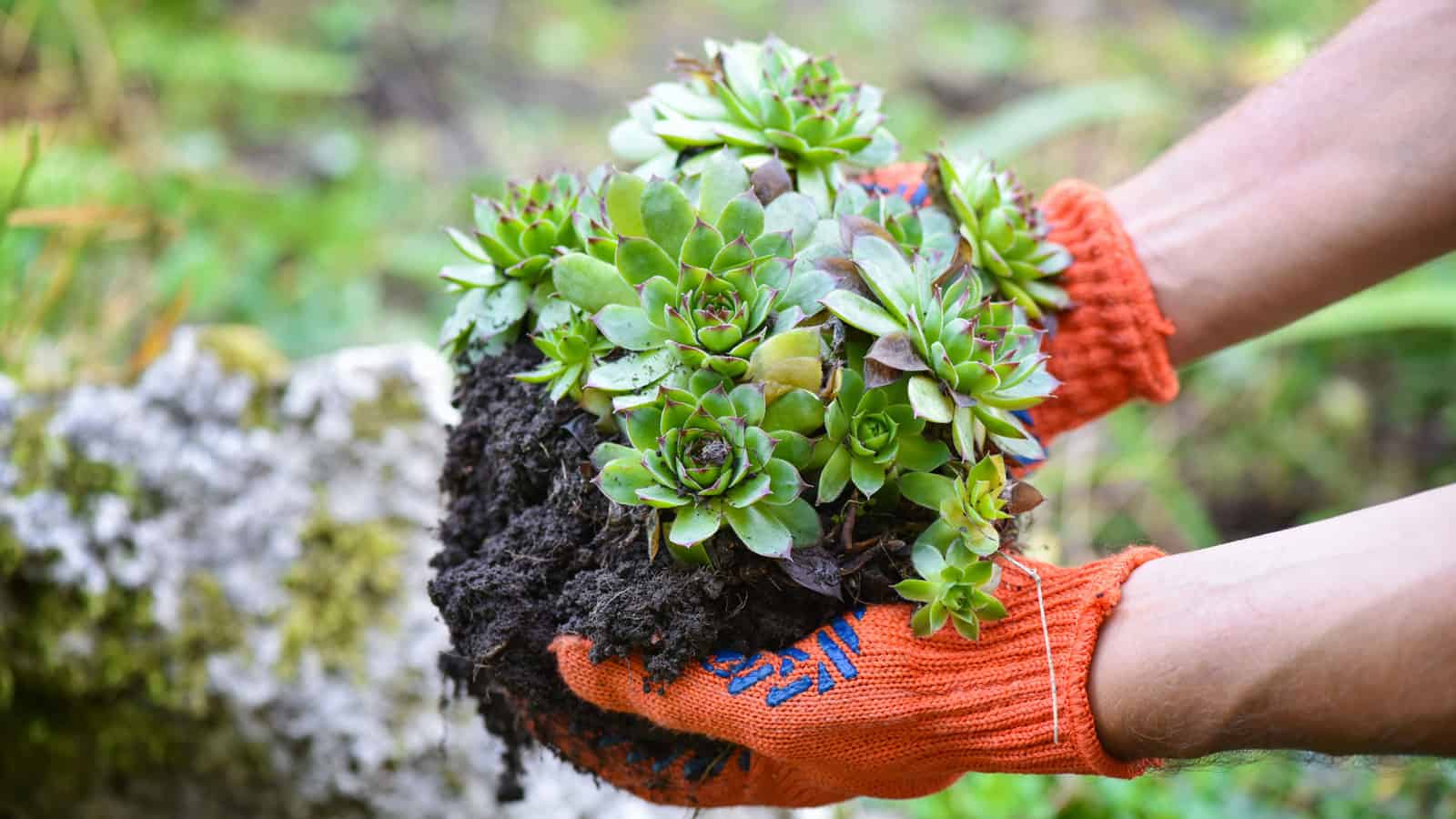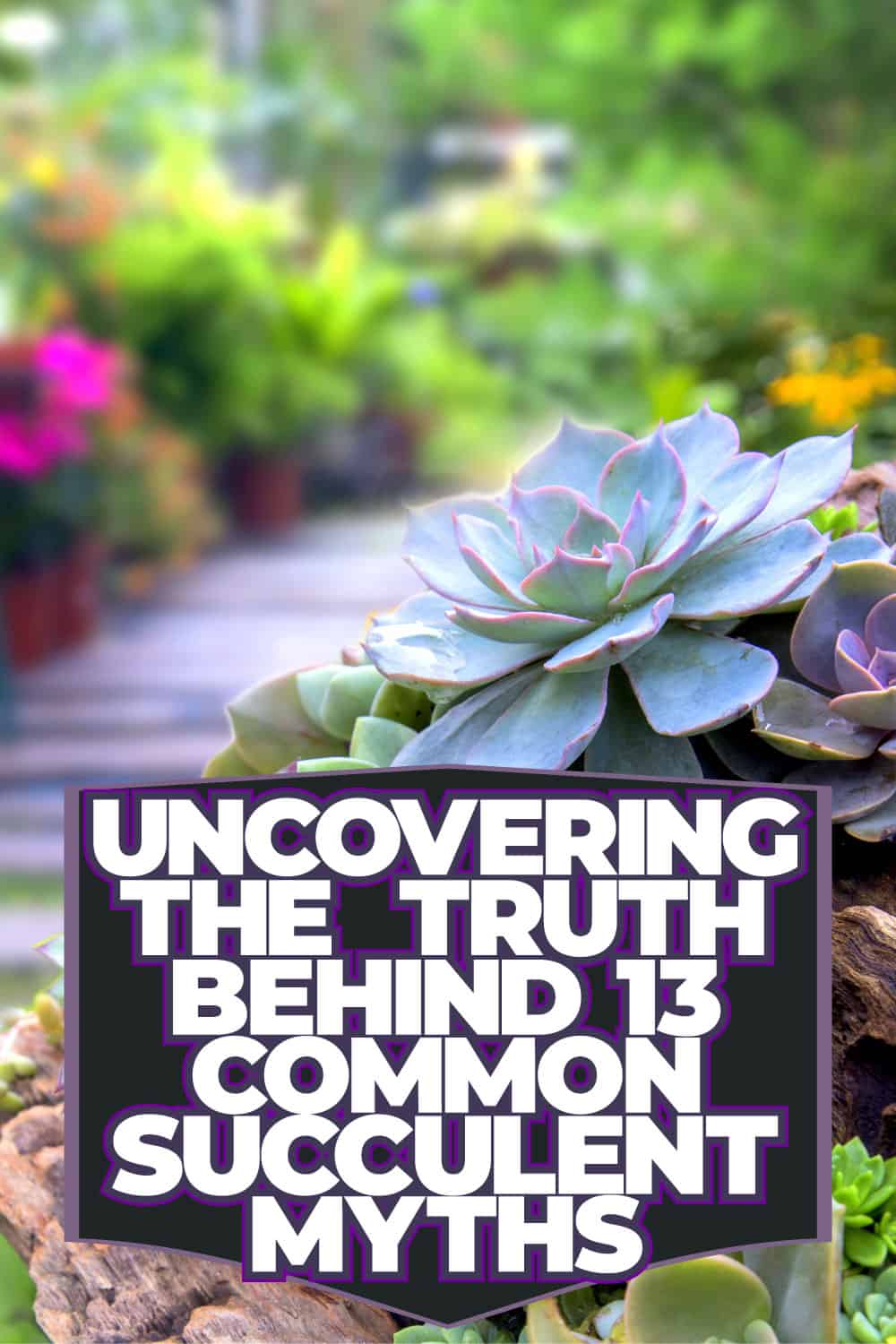Are you puzzled by all the different advice about succulents? You're not the only one.
With so many myths floating around, figuring out the best way to care for these plants is tough. Our article is here to clear things up.

Let's uncover the truth behind common succulent myths so that you can take better care of your plants and enjoy them for years to come!
Myth #1: All Succulents Are Hardy
Contrary to popular belief, not all succulents are equally tough. While they are good at water storage, different types have varying care requirements.
Take the Echeveria, for instance. It's got beautiful rosette leaves and bright colors, but it's not as rugged as some of its succulent cousins.
It needs the right mix of well-draining soil, at least 6 hours of direct sunlight, and just the right amount of water to really flourish.
So be sure to research the specific needs of your succulent to ensure that it's given the proper care.
Myth #2: Full, Direct Sunlight Is Necessary for All Succulents
It's a misconception that succulents always need full, direct sunlight. In fact, while desert varieties do well in bright sun, many succulents prefer indirect light or partial shade.
If your succulents aren't getting enough light, you'll see them stretch out, trying to get closer to the light.
But too much direct sun can lead to brown spots or even damage. You need to find just the right amount of light for your particular succulent.
Varieties like the snake plant, zebra cactus, and hoya are excellent examples of succulents that thrive in less intense light, making them ideal for indoor areas with limited sunlight.
There are even succulent varieties that don't need sun at all. You can find out more by reading this post.
Myth #3: Succulents Should Be Planted in Sand
Another common myth is that succulents thrive best in sand. However, while they need well-draining soil, sand falls short.
Sand does not provide the necessary nutrients that succulents need to thrive. Instead, using a soil mix specifically designed for succulents and cacti is best.
See this succulent plant soil mix on Amazon.
This mix ensures proper drainage, aeration, and moisture retention: sand for drainage, perlite for aeration, and peat moss for moisture.
Also, different succulents might prefer different soil mixes. Some might like more sand, others more perlite. So, looking up the specific soil preferences for your succulent types is a good idea.
Myth #4: Succulents Are the Same as Cacti, and Vice Versa
While all cacti are succulents, not all succulents are cacti. Succulents are a broad category of plants that store water in their leaves, stems, and roots to survive in arid climates.
Meanwhile, cacti are a specific type of succulent with unique features such as spines, areoles, and flowers.
Myth #5: Succulents Can Handle Any Weather
You may have heard succulents are hardy plants that can handle any weather conditions. This common myth can lead to the death of your beloved succulent plants.
Succulents can actually be sensitive to extreme temperatures and weather conditions. For example, too much rain or humidity can cause their roots to rot, which can be fatal to the plant.
Similarly, succulents can suffer damage from frost or extreme cold weather.
Myth #6: All Succulents Are Edible
While some succulents are edible and have medicinal properties, not all succulents are safe to consume.
Some succulents contain toxins that can cause serious health problems, such as vomiting, diarrhea, and even death.
For example, the Kalanchoe plant contains a toxic substance called bufadienolides, which can disrupt heart function and cause abnormal heart rates if ingested.
Again, it's important to do your research and exercise caution when using succulents for anything other than decoration.
Myth #7: Topdressing Provides Extra Drainage for Succulents
There's a common belief among succulent lovers that adding a layer of small rocks or gravel (topdressing) on top of the soil aids in drainage.
However, this isn't necessarily true. In reality, topdressing can actually hinder drainage and cause more harm than good.
When you water your succulents, the water needs to be able to flow through the soil and drain out the bottom of the pot.
If you have a layer of topdressing on top of the soil, the water will be slowed down and may not drain as efficiently. This can lead to root rot and other problems.
So, instead of counting on topdressing for better drainage, focus on using well-draining soil and a pot with proper drainage holes.
Myth #8: Closed, Sealed Spaces Are Suitable for Succulents
Succulents are not meant to be kept in an airtight environment because they require proper air circulation to thrive.
While succulents can survive for a short period in a closed environment, they cannot thrive in such conditions.
They may appear healthy at first but will start to deteriorate over time.
Stagnant air restricts the supply of carbon dioxide necessary for photosynthesis and promotes conditions favorable for pests, mold, and mildew.
This can also cause the roots to rot and the leaves to turn yellow or brown.
There are other reasons as well, just like @SucculentsBox mentions in the video below, that underscores the importance of good air circulation for succulents.
Myth #9: Succulents Don't Need Regular Watering
Contrary to popular belief, succulents do need water, just not like other plants.
Their ability to store water in their thick leaves and stems is a survival adaptation for dry climates, not a ticket to a water-free existence.
That said, you wouldn't want to overwater your plant as well. It's important to ensure your succulent's soil is completely dry before watering again.
You can test this by sticking your finger about an inch into the soil. If it feels dry, it's time to water. If it's still moist, wait a few more days before checking again.
Depending on the season and your home's conditions, you'd want to water anywhere from once a week to once every three weeks.
Myth #10: Any Soil Is Fine for Growing Succulents
Succulents have shallow roots, so they cannot tolerate soil that retains too much moisture.
Using regular potting or garden soil can lead to root rot and other issues that can harm your succulents.
As we've shared, a well-draining soil mix specifically designed for succulents is best!
Myth #11: Succulents Need Large Containers to Spread
While it's true that a container too small can restrict root growth and negatively impact the plant, excessively large containers aren't necessary for succulents.
When planted in a large container, they may have a harder time absorbing water from the soil, leading to root rot and other issues.
Instead of using a large container, opt for a smaller pot with good drainage. This will allow the soil to dry out between waterings, preventing overwatering and root rot.
You can also use a shallow container to encourage your succulents to spread out and grow horizontally.
Myth #12: Succulents Don't Need to Be Pruned
Like many other plants, succulents can benefit a lot from occasional pruning. Pruning succulents helps remove dead or dying leaves, which can otherwise attract pests and harbor disease.
It also encourages new growth and helps the plant maintain its energy for healthy leaves and stems.
Also, pruning is sometimes essential for propagating new plants, as many succulents can grow from cuttings.
However, the approach to pruning succulents is different from other plants. It's usually a gentle process, removing only what's necessary and ensuring not to harm the plant's main body.
Myth #13: Succulents Can Be Completely Neglected and Still Survive
Completely neglecting your succulents can lead to various problems, including dehydration, root rot, pest infestations, and, in the worst case —their demise.
As we've mentioned, succulents need proper watering, albeit less frequently than other plants.
They also need a good amount of sunlight to maintain their vibrant colors and compact form.
Wrapping Up: The Real Deal on Succulent Care
Now that you know the truth behind common succulent myths, you can take better care of your succulent plants.
Remember to avoid overwatering, provide adequate sunlight, and choose the right soil for your succulents!


